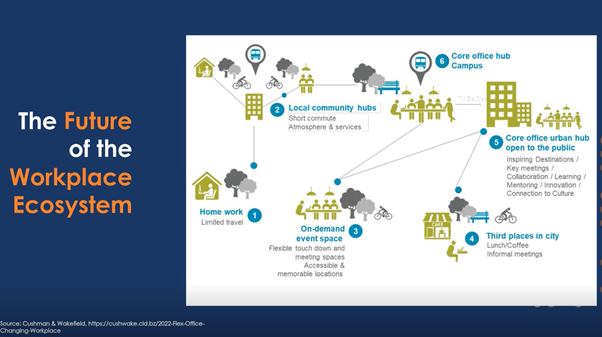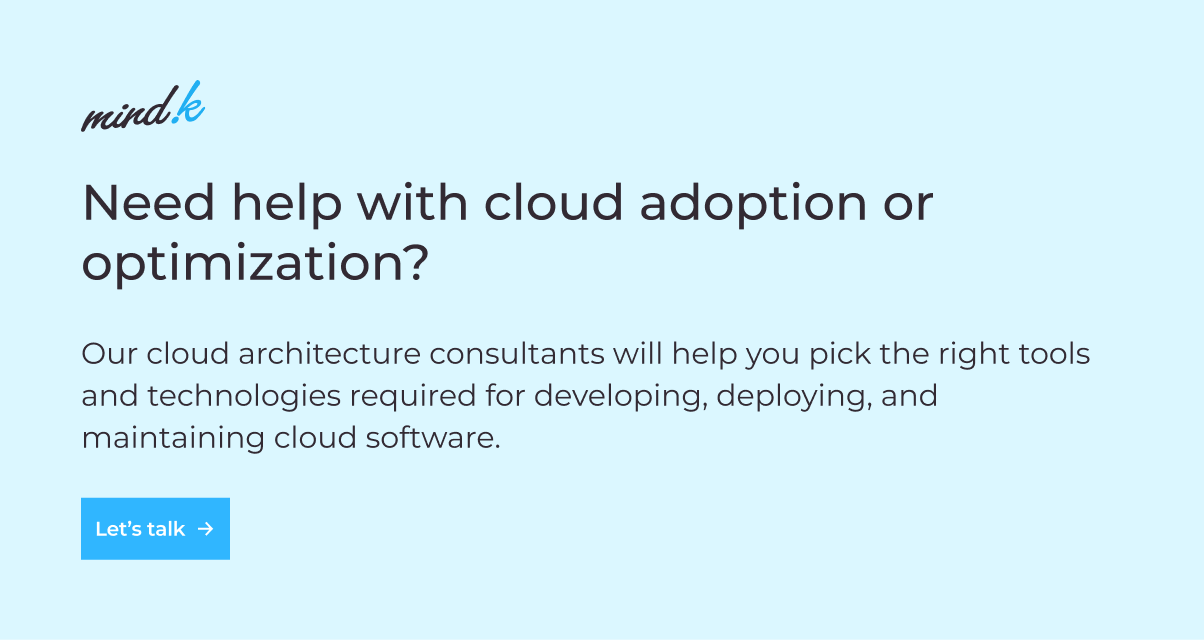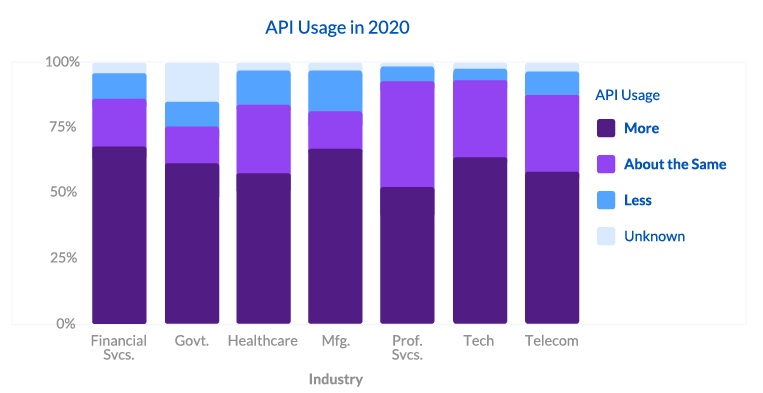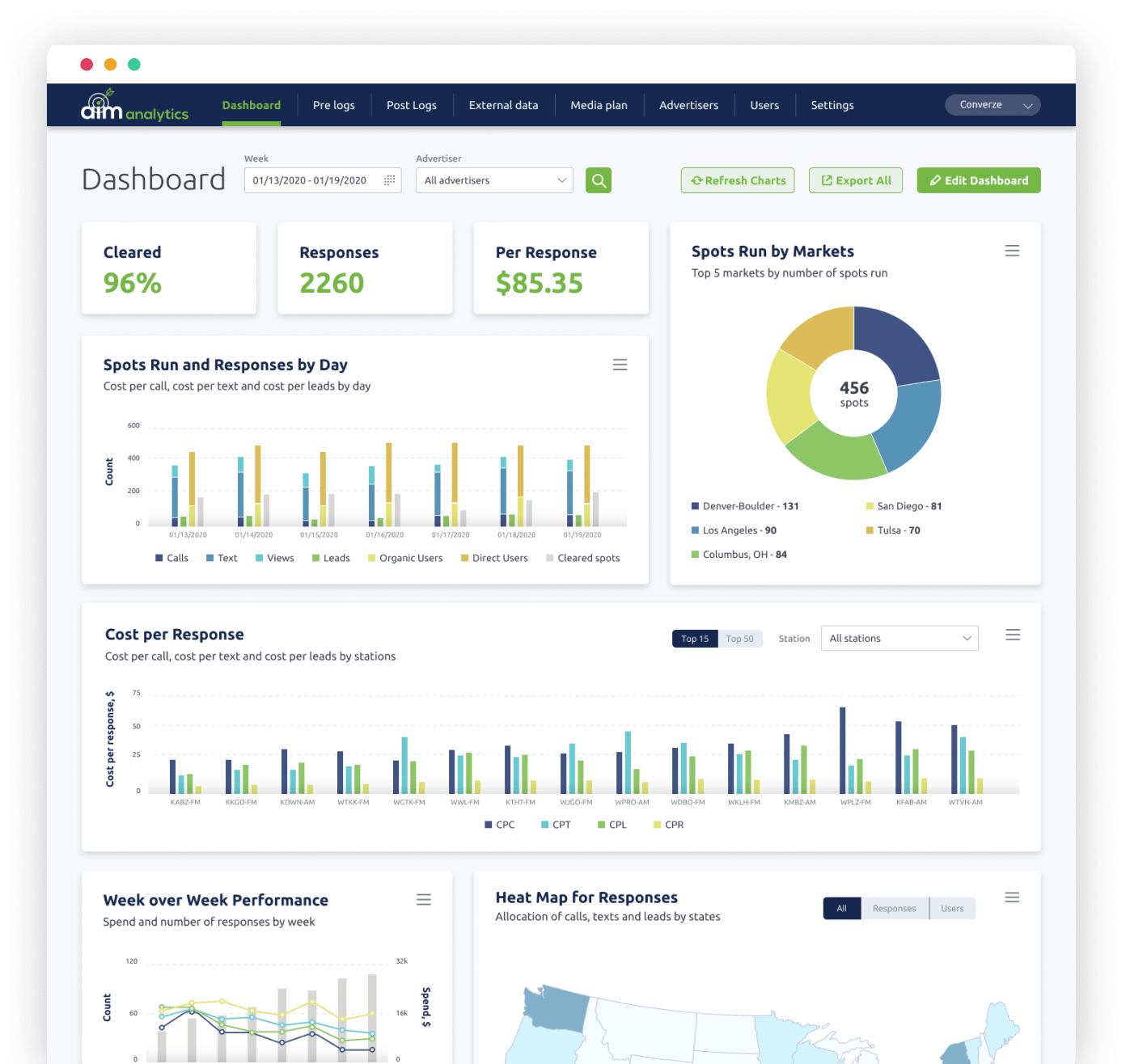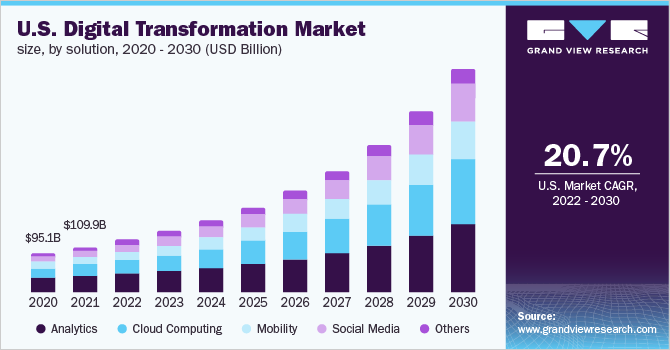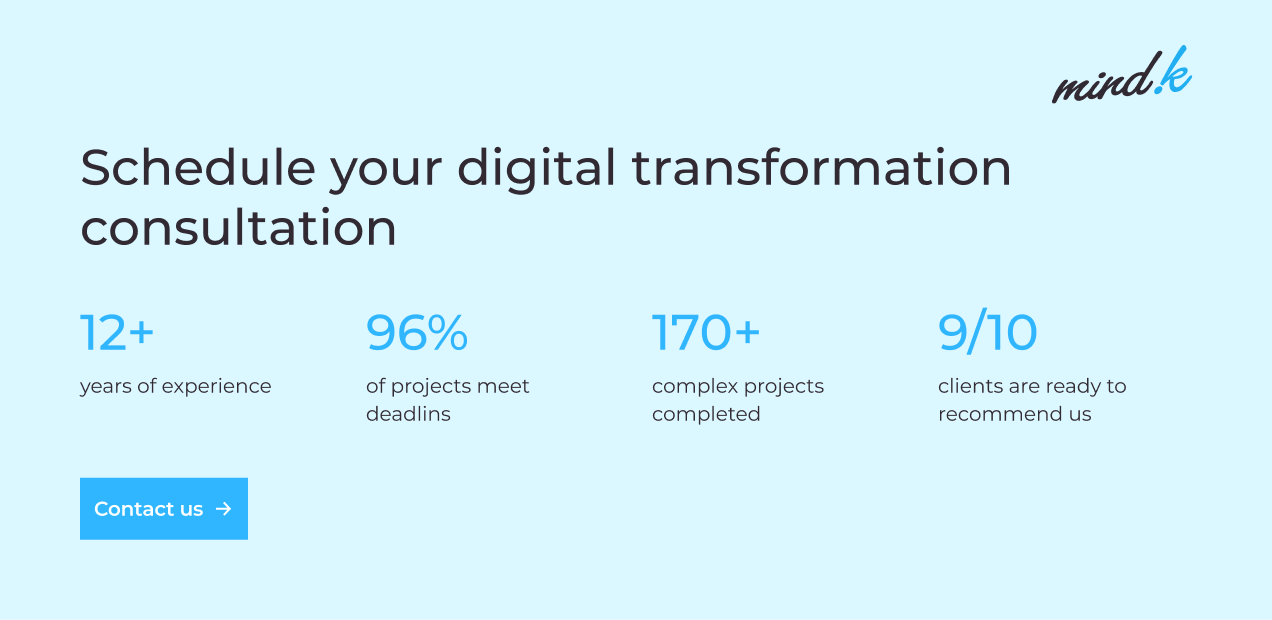There is no single blueprint for businesses to follow in order to adapt to the digital age. But even though each industry is moving at different paths and paces while undergoing digital transformation, they have one thing in common: they are all adopting modern digital technologies.
Based on MindK’s experience developing software solutions for a variety of sectors, including finance, education, recruitment, construction, energy, and others, we can confidently assert that there is a set of technologies that can accelerate digital transformation for businesses across industries. So, let’s discuss technologies from the point of view of use cases and their relevance today and single out those technologies worth considering by anyone looking to improve digitalization processes.
The “golden hour” of technology: how digital transformation technologies contribute to business success
Technology today is clearly not a choice in a new business environment, but rather a core business strategy that must be integrated into every aspect of an organization. The latest data from PWC shows that around 60% of senior executives believe that digital transformation will be critical for business growth in 2022.
Taking into account the growing relevance of digitalization and the adoption of modern technologies, the global investment in digital transformation is expected to almost double between 2022 and 2025 years. Below are only a few use cases that show the relevance of technology adoption across industries:
Responding to customer expectations
In order to meet client expectations, companies need faster response time, quick adaptation to client needs, and individual attention to each and every customer. The power of technology that enables companies to connect with consumers on the go is the first reason technology has become an integral aspect of the digital transformation strategy in many companies.
A report by McKinsey shows that the COVID-19 pandemic significantly increased the pace of technology adoption for customer interactions. During the pandemic clients shifted drastically to online channels and businesses had to respond. Today, companies are three times more likely to claim that at least 80% of their client interactions are digital than before the crisis.
According to Accenture, a technology consulting company, businesses that wish to apply technology to improve customer service quality should pay attention to the following:
- Analytics and data management that enables analyzing client preferences based on the data acquired from them.
- Insight-driven marketing for better and more efficient target marketing.
- Marketing automation that streamlines and automates company operations to increase productivity and lower expenses.
- Optimization of self-service that provides clients with the ability to interact with the company whenever they want.
- Improving the effectiveness of the workforce with modern digital tools and cutting-edge technologies.
Improving team collaboration in remote settings
Regardless of company size or sector, companies admit that collaboration is paramount for efficient business operations and staff productivity. Around 86% of employees and executives say that the lack of effective collaboration and communication is the key reason for workplace failures.
To improve team collaboration in remote settings, there should be a greater focus on collaboration technology that enables accessing information from any device and connecting the workforce. By collaboration technology we mean the technology-based communication medium, as well as other digital features designed to support collaboration.
Statistics say that since the COVID-19 pandemic, 87% of employees have become comfortable with digital cooperation. More and more businesses are recognizing the importance of collaboration technology in team cooperation and team culture – 80% say that collaborating virtually with their team is imperative to effectively do their job.
With all the opportunities the collaborative technology provides, it has the power to drive the new hybrid workplace ecosystem which considers the office as a place to go for ‘interpersonal’ purposes.
Increasing business efficiency
Increasing business efficiency has a lot to do with business process automation (BPA). Business process automation is a technology-based approach to automating day-to-day repetitive processes inside a company. The main goal of BPA is to automate complex business processes to make them more transparent, cost-efficient, and streamlined while eliminating errors.
The McKinsey survey revealed that more companies are automating their operations today than two years ago. Two-thirds of respondents say their organizations are at least piloting business process automation across one or more business units or functions.
This information is also proved by Gartner’s annual survey of chief information officers (CIOs) and tech executives. It revealed that business process automation is gaining traction among businesses, with 25% expecting to adopt automation initiatives in the next 12 months, and 21% currently in the pilot stage. Among the areas where business process automation gives great results are:
- rote learning and repetitive tasks;
- manual tasks that are risky or may cause injury;
- making complex decisions that can be addressed to the machine;
- sensor-based tracking and alerts (just look at the use cases of IoT in the energy sector);
- self-service employee portals;
- research;
- document management, and much more.
Saving costs
Budget optimization and reduction have become essential steps in assuring the company’s ability to operate efficiently. Competitive performance is vital, and keeping costs under control is an important condition of success. Here are a few examples of how technology can help businesses reduce spending:
- reduction of material costs gained from digital documentation and paperless operations that also helps to accelerate the speed of doing business;
- better use of time by automating the manual operations like collaboration, staff onboarding, contract negotiation, new client acquisition, and other critical processes.
- reduction of bureaucracy that helps teams become more flexible and successful as a whole.
These and other advantages are benefits that technology can easily offer if applied wisely. Now let’s see which technologies are now the most effective tools for a company’s digital transformation.
Five key technologies that are important for the digital transformation strategy
#1. Cloud computing
Traditional storage services are unable to manage massive volumes of data cost-effectively and securely. As a result, businesses across industries have begun to use cloud technology. What started as a massive repository to store data has evolved into a ground-breaking platform that enables businesses to design and deploy their own apps while leveraging fully managed business processes. The COVID-19 pandemic just accelerated the digital transformation and cloud migration correlation.
Gartner assures that the ongoing pandemic and the surge in digital services have turned the cloud from a popular technology into a centerpiece of the digital transformation strategy.
According to Gartner researchers, by 2025, more than 85% of enterprises will adopt a cloud-first strategy and will be unable to completely execute their digital plans without the use of cloud-native architectures and technologies.
Red Hat 2022 Global Tech Outlook report came with some interesting insights about cloud computing – instead of relying simply on private or public clouds, digital transformation professionals are increasingly considering a hybrid cloud approach.
In particular, companies that believe themselves to be in the “leading” or “accelerating” stages of their digital transformation initiatives prefer to use a hybrid cloud. At the same time, enterprises in the early phases of digital transformation opt for a private cloud. This means that digital transformation executives are aware of the flexibility and consistency of an open hybrid cloud platform and are able to make use of it.
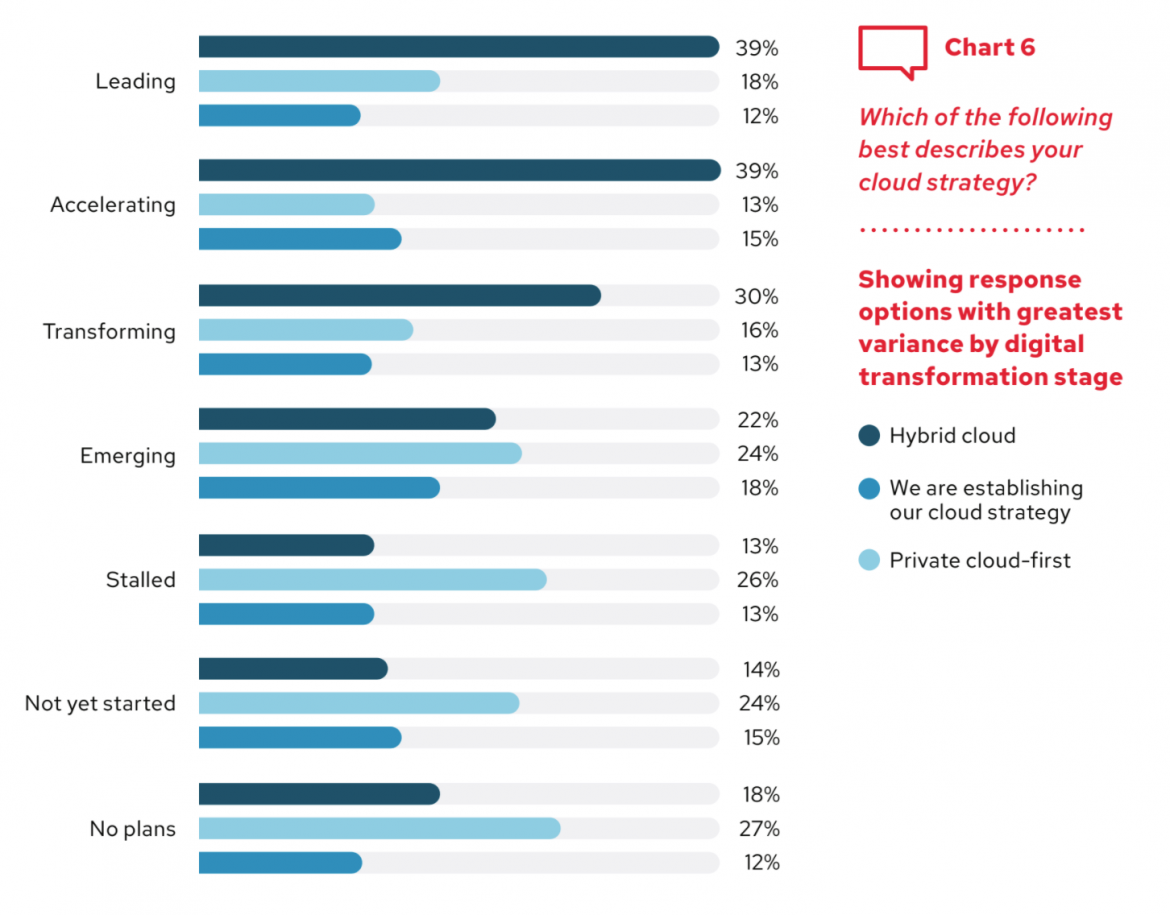
If you haven’t dealt with the hybrid cloud concept before, it is a computing system that combines at least one private cloud with at least one public cloud to deliver a flexible mix of cloud computing services.
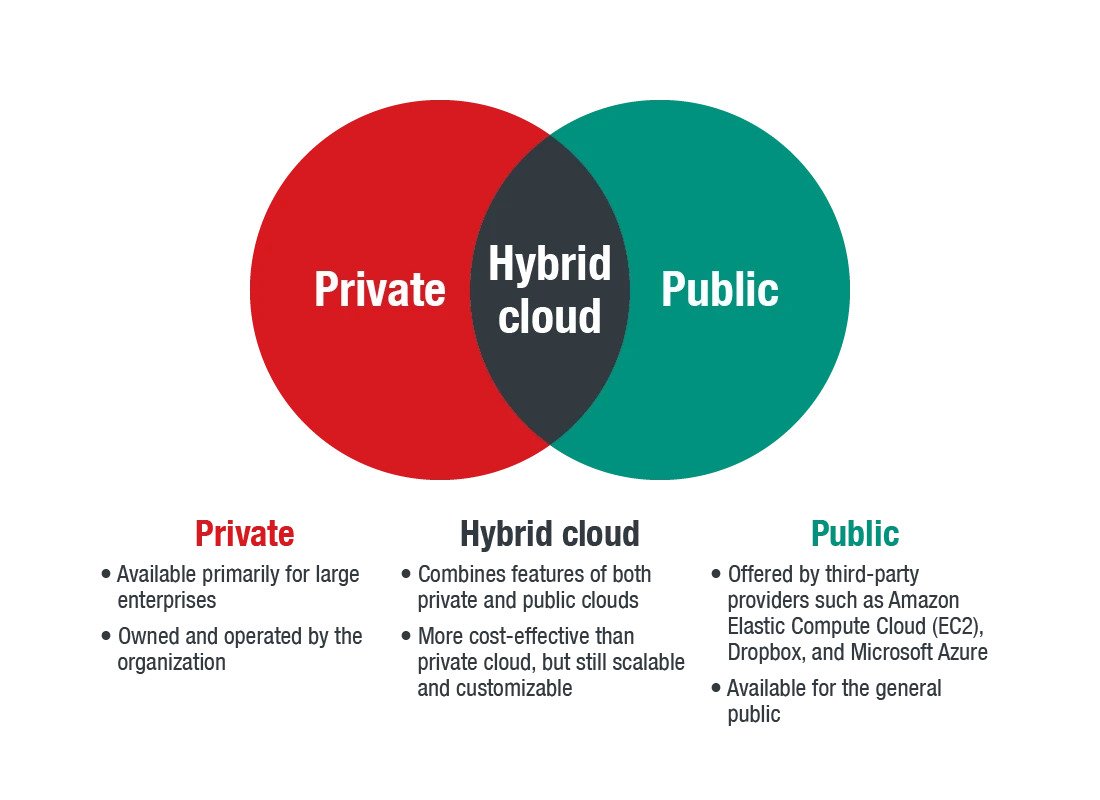
Among the benefits that encourage more and more companies to opt for the hybrid cloud are:
- improved scalability and control as it enables adjusting cloud settings to respond automatically to changes in demand, optimizing performance and efficiency;
- better support for a remote workforce by providing on-demand access to data that isn’t tied to one central location;
- increased agility and innovation that allows effortlessly scale their workload to the cloud as well as test, create, and launch new products more quickly;
- business continuity as it helps companies backup key data to the cloud and ensure scalability in case of increased demand;
- improved security and risk management means the company chooses where to house data and workloads based on compliance, policy, or security requirements.
A hybrid cloud model is a great option for businesses looking for the best of both worlds in computing, although it’s not a silver bullet. So, first of all, you must weigh the benefits and drawbacks of a hybrid solution against your organization’s needs and priorities. Sometimes it’s hard for a company to decide and assess all risks and opportunities, so we at MindK provide software architecture consulting to advise businesses on the fastest and most cost-effective cloud transformation strategy.
Another thing that you should know when building a digital transformation business strategy is that there are different approaches that could enable digital transformation with the cloud – Software as a Service (SaaS), Infrastructure as a Service (IaaS), Platform as a Service (PaaS). All the deviations between these approaches we’ve already discussed when talking about cloud and SaaS differences, so check it out to connect the dots.
The most important thing here is that SaaS is one of the most popular cloud approaches. The SaaS model assumes that the solution is centralized on a distant cloud network and operates on a subscription basis, which makes this approach increasingly popular among enterprises because of its flexibility, cost, and other factors.
For example, we helped our client CEMAsys to shift their offline consulting business completely into the cloud. In particular, we developed a successful SaaS solution that helps companies be more sustainable. The product is now used by more than 250 Norwegian and global companies to manage and report all their important sustainability and environmental information.
#2. API-based integration
Connected experiences are at the heart of almost every digital transformation journey. Application Programming Interfaces (APIs) are driving these connections by enabling different systems to communicate seamlessly with one another. Public, partner, and private are the three most prevalent types of API used.
Amid the COVID-19 pandemic in 2020, API adoption grew across all industries, according to the RapidAPI Developer Survey. 62% of executives claimed they were planning to use more APIs in the future. In addition, the report revealed that higher API maturity tends to correspond with a more robust digital transformation approach.
Source: devopsdigest.com
So, why is API so important for digital transformation plans besides just integrating solutions? Application Programming Interfaces allow:
- Building better digital experiences and products: more than 56% of IT decision-makers consider APIs as assets that help companies build better experiences. In the healthcare business, for example, the COVID-19 pandemic brought the demand for data sharing between healthcare providers, payers, and pharmaceutical firms to an almost critical level. APIs have become a critical facilitator of data exchange, which is a major element in the digital healthcare industry’s spectacular rise.
- Streamlined architecture: APIs allow designing the backend independently of the user interface. For example, companies can create business logic once and deploy it across iOS, Android, and the web, or even rewrite the UI with a newer framework without compromising the backend. Without APIs, multi-platform mobile development is simply slow and expensive.
- Improved scalability: Instead of building a large monolithic product, the company may develop complicated systems from separate components that communicate via APIs (usually called microservice architecture). This way, different services may be built by different teams that use the most suited tech stack. Furthermore, each service may be scaled separately by allocating more resources if it requires improvements.
- New or enhanced revenue channels: API can create new product offerings and business models while also expanding its reach into new and existing markets. Many companies have achieved great business results by applying solid API-based strategies. For example, by forcing all teams to exchange data and interact via APIs, Amazon went from an online retailer to a multibillion-dollar cloud powerhouse. The enterprise can adapt to market changes faster than its competitors since everything is developed by means of APIs. To name some other successful use cases of API, Salesforce and eBay receive around 50%-60% of their revenue through APIs, while Expedia generates as much as 90%.
- Saving costs and better speed of development: developers may use APIs to get the majority of the functionality they need to build apps from other places, rather than having to start from scratch. They can leverage cost-effective APIs from third-party suppliers or use their own internal APIs instead of wasting precious resources and time reinventing the wheel.
For practically all of our projects at MindK, we create internal APIs. Based on our experience, we make sure that a strong API strategy brings a number of above-mentioned benefits. For those who are interested in developing an API, we’ve even created a 5-step guide on how to create an API.
#3. Data Analytics and Big Data
Data is a game-changer that may provide organizations with valuable insights and make their work easier. However, the processing of this data is a challenge. Data in fragmented formats is difficult to organize and might potentially have negative consequences for businesses. This is why data analytics should become an integral part of the digital transformation strategy.
In spite of the fact that using data can provide companies with almost unlimited opportunities, companies make less than 50% of their decisions based on quantitative data. Nevertheless, 85% of those polled desire to increase their use of data analytics in decision-making.
Data analytics is a strategy for gathering, inspecting, purifying, and transforming data to highlight all relevant information that aids in decision-making and enables better process management.
Thanks to data analytics, or its most popular expression, ”Big Data”, companies gain better control over company resources, lower process costs, improve company flow, enable better transparency, and even create new revenue streams. In general, the data analytics allows the company to:
- make better business decisions;
- streamline operations;
- personalize the customer experience;
- identify and mitigate potential risks;
- optimize costs; and much more.
At MindK, we’ve seen a large increase in requests aimed at data analytics while developing software products. If you look through our portfolio, you’ll see that most solutions we develop have a strong analytics module in place. Data analytics is fruitful for every industry we work with, whether it is straightforward human resources solutions, complex energy-management systems, integrated construction for supply chain management, or even an interactive music-search engine.
For example, for a leading direct-response advertising agency in the United States, we developed an intelligent marketing attribution platform called AIM Analytic. The system not only automates end-to-end advertising workflow but also allows the client to manage thousands of different campaigns and analyze their results in a few clicks. It provides a number of graphs, charts, and customized reports that display data in a simple and easy-to-understand format. By using data analytics and optimizing campaigns, they provide clients with the most seamless and direct pathway to the best ROI and conversions. We can say for sure that a strong data-analytics strategy at the core of the system provides a huge competitive advantage, as today there are no systems like AIM analytics on the market.
[Explore the detailed case study]
#4. Mobile
Mobile applications are frequently viewed by industry professionals as a separate entity rather than vital facilitators in digital transformation. This is not quite right. Integrating mobile applications into the digital transformation strategy is pretty fundamental
If you look at the digital transformation growth by solutions, you’ll see that mobile app development will increase significantly in the next few years along with cloud computing and analytics.
These days, the world revolves around smartphones, so for clients, the mobile app serves as the face of the company. However, mobile adoption is not only limited to customer-centric mobile apps to improve user experience and build brand image. Mobile has a massive impact not only on customers, but also on the company’s operations and employees. When the company embraces mobile applications it is called enterprise mobility.
Enterprise mobility allows employees to do their jobs anywhere from a smartphone or tablet, which simplifies operations and increases efficiency across departments. Mobile employees may access real-time communication, plan and automate operations, and collect data that is critical to the company’s success.
Although mobile technology was already ingrained in a number of companies’ procedures to some extent before the COVID-19, companies are now strengthening their efforts in this direction. The latest report states that around 85% of companies have increased their focus to digitalize employee collaboration and communication, including using mobile applications.
To sum up, for customer experience, mobile apps improve customer loyalty, enhance engagement, offer a competitive advantage, and increase branding, and for the company they improve transparency, streamline processes, and make decision-making more effective.
When it comes to the digital transformation of a company’s workflow and employees, there are two key factors to consider – flexibility and portability. By putting operations and communications on mobile applications, businesses may meet both of their goals at the same time.
We at MindK have already made sure that our client that decided to improve the workflows and customer experience by means of mobile benefits from this decision. For example, for one of our clients that issues competency certificates for offshore and land-based industry professionals, we developed a cross-platform mobile application. The mobile app not only allows users to easily access, keep, and manage their certificates on the go, but also helps our client to streamline internal operations and minimize the labor-intensive processing of paper-based applications and certificate renewals.
#5. Artificial Intelligence
Artificial Intelligence (AI) is no longer a buzzword. It is already at the heart of most enterprises. TDWI Research says that around 90% of company leaders believe that AI is irreplaceable for competitive advantage. The same report indicates that regardless of the industry, AI-driven software development could be very beneficial in such departments as:
- IT to detect and prevent different security breaches, and automate processes.
- Operations to partially or entirely automate repetitive, data-driven operations such as accounting.
- Engineering / R&D to implement predictive models and perform preventative maintenance.
- Customer service by means of applying AI chatbots and intelligent assistants in order to ensure fast, and convenient customer experiences.
- AI in healthcare is used to improve diagnostic accuracy, provide highly personalized treatment, and automate administrative work.
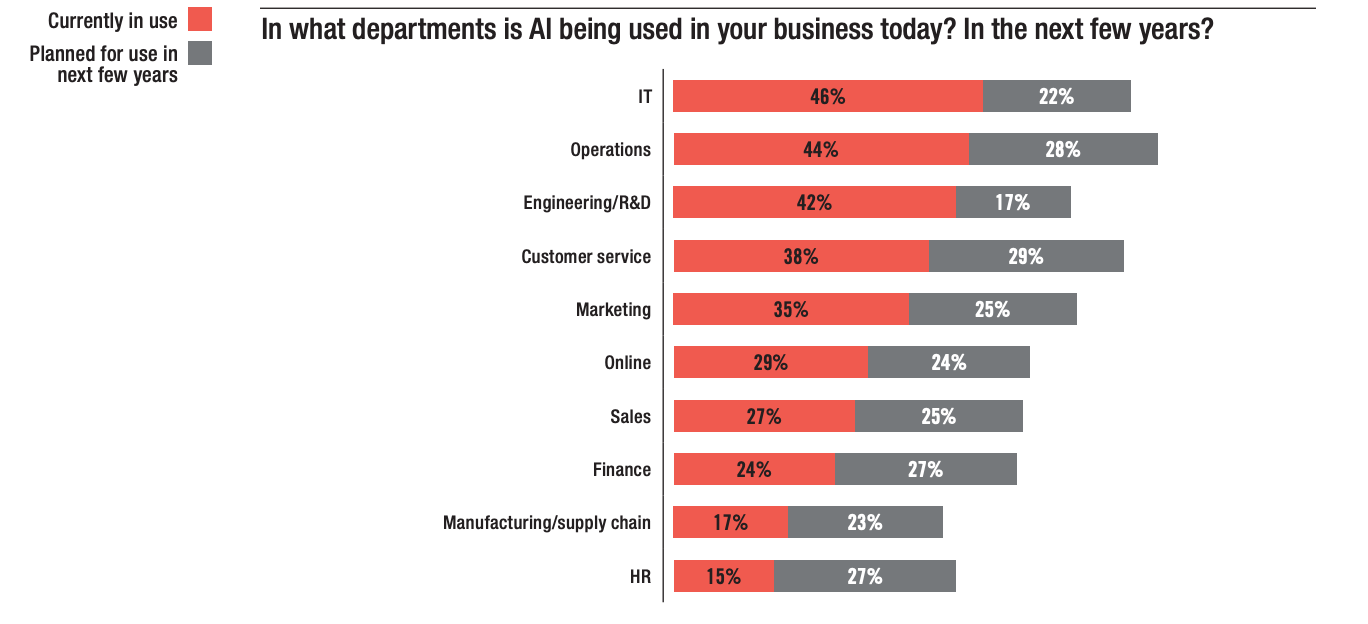
Above that, building predictive models using techniques like machine learning, according to business experts, is the most popular use case for AI. With the use of past and existing data, predictive modeling is a statistical approach that uses machine learning to anticipate and forecast possible future outcomes.
Source: Driving Digital Transformation Using AI and Machine Learning by tdwi.org
Predictive analytics, in a nutshell, saves time, effort, and money when predicting business outcomes. Environmental elements, competition information, regulatory changes, and market situations can all be included into the mathematical equation to produce more comprehensive perspectives at a lower cost.
How MindK can help with digital transformation
MindK is a digital transformation expert who can assist you in implementing the most effective transformation strategy for your company. Our digital strategy professionals assess your existing position and provide a course of action to improve your customer experience and commercial outcomes.
We can help you with upgrading your IT infrastructure, automating business operations, and developing new products. When you want to start your digital transformation journey with us, check out our Digital Transformation Consulting Services.


